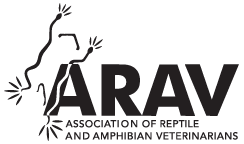Analytical Variability of Hematological Methods for White Blood Cell Counts in Prairie Rattlesnakes (Crotalus viridis)
Abstract
Evaluating leukocytes provides insight in the overall health of animals by characterizing pathologies related to infection, inflammation, and stress. In reptile species, many leukocyte quantification methods are used to evaluate white blood cell (WBC) parameters; however, agreement and analytical variability (repeatability) between the various methods have yet to be reported and critically assessed in many species, including the prairie rattlesnake (Crotalus viridis). The objectives of this study were to 1) test agreement between hematology parameters determined by phloxine-based stain (Eosinophilic leukopet, EO), Natt–Herrick’s (NH), and estimate (EST) methods using fresh whole blood and lithium-heparinized blood; 2) determine the agreement between estimates from a veterinary student and from a board-certified clinical pathologist; and 3) determine the analytical variability of EO, NH, and EST methods. Venipuncture was performed in 27 adult snakes, and agreement was then assessed using Bland–Altman plots and Passing–Bablock regression between all methods. There was a variable degree of proportional and constant error between many of the quantification methods, but descriptive statistics for all methods fell within biologically relevant values. There was good agreement in the EST method between the clinical pathologist and the veterinary student, but the student had a significantly higher mean WBC count in fresh whole blood. The lowest analytical variability was observed with the NH method (15.4%), whereas the highest was observed with the EST method (58.6% for the clinical pathologist, 59.4% for the veterinary student). These results identify the intrinsic variability in reptile hematological methods currently used and emphasize the need to develop a singular diagnostic standard for leukocyte quantification in reptile species.
Introduction
Wildlife conservation efforts have increasingly demonstrated the importance of health monitoring (Ryser-Degiorgis, 2013); subsequently, there is an increased need to standardize a method for evaluating health status in wildlife (Russo et al., 1986). A complete blood count (CBC) is a commonly used diagnostic assay heavily relied on by veterinarians to assess health status of examined animals, including several viper species (Troiano et al., 1997; Allender et al., 2006; LaGrange et al., 2014). A CBC evaluates the relative concentrations and morphology of the patient’s erythrocytes, leukocytes, and thrombocytes (Deem et al., 2009). However, due to the presence of nucleated erythrocytes in reptiles, automated analyzers frequently used in companion mammalian species are currently not reliable for use in reptiles (Campbell, 2014; Sykes and Klaphake, 2015).
There are three major leukocyte quantification methods used in reptiles: Natt–Herrick’s (NH), phloxine-based stain (Avian Leukopet), and total white blood cell (WBC) estimate (EST) from peripheral blood smears. The NH method is a direct method that stains all blood cells and is commonly used to determine WBCs independently from the blood smear (Dein et al., 1994). The EO method is an indirect method that counts heterophils and eosinophils that requires a differential blood count to calculate total leukocytes. The EST method is a direct method and is reported to be preferred for use in several species of reptiles, including the Galapagos tortoise (Chelonidis spp.; Sheldon et al., 2016), due to its presumed increased accuracy. The three methods are often interchangeably used to calculate total WBCs in reptilian species, but the analytical variability (repeatability) is sparsely reported in reptiles (Arnold, 1994; Sheldon et al., 2016; Winter et al., 2019).
The current study used prairie rattlesnakes (Crotalus viridis) to accomplish the following three objectives: 1) test agreement between hematology parameters determined by EO, NH, and EST methods; 2) determine agreement between estimates from a veterinary student and from a board-certified clinical pathologist by using both fresh and lithium heparin (LH)-anticoagulated blood; and 3) determine the analytical variability of EO, NH, and EST methods.
Materials and Methods
Sampling techniques
Prairie rattlesnakes, permanently housed (>3 yr before study start) as part of a teaching collection at the University of Illinois, were examined and sampled in February 2019. Study inclusion criteria included a history of normal physical examinations and negative Ophidiomcyes quantitative polymerase chain reaction (Allender et al., 2015). Exclusion criteria included the presence of physical examination abnormalities or historical abnormal clinical pathology findings. Blood (0.5 ml, <0.2% body weight for all snakes) was collected from the ventral coccygeal vein using a 3-ml syringe and 23-gauge × 0.75-in. needle. Two fresh blood smears were made immediately from the syringe (needle removed), and the remaining sample was immediately placed into LH microtainers (Becton, Dickinson and Company, Franklin Lakes, NJ, USA). Samples were gently inverted multiple times, stored at room temperature, and processed within 2 h. Next, two LH-anticoagulated blood smears were prepared. When dry, slides were stained the same day with a modified Wright–Giemsa stain (Hema 3TM Stat Pack, Fisher Scientific, Pittsburgh, PA, USA). Blood that was obviously lymph contaminated (i.e., visibly thin) or clotted was not used in analysis. All activities involving live animals were approved by the University of Illinois Institutional Animal Care and Use Committee protocol 17013.
CBCs
Total leukocyte quantifications for EO (Leukopet™ WBC kit, Vetlab Supply, Palmetto Bay, FL, USA), NH (Exotic Solutions, Melbourne, FL 32940, USA), and EST methods were carried out on both fresh and LH-anticoagulated blood smears. The EO and NH procedures were performed per the manufacturers’ instructions and read on a Bright-Line™ hemacytometer (Hausser Scientific, Horsham, PA, USA) in triplicate. In brief, for the EO method, heparinized whole blood (25 ml) was added to phloxine B (775 ml), incubated for 10 min, and loaded into both chambers of the hemacytometer. Heterophils and eosinophils uptake the EO stain and were counted on hemacytometer grids. Total WBC count was determined using the following equation:

For the NH solution, blood was added to the stain in a 1:200 dilution for a period of 5 min and then loaded into both chambers of the hemacytometer. NH stains all the leukocytes and the total quantity was calculated using the following equation:

A single second-year veterinary student observer (JR) prepared and read three hemacytometers per prairie rattlesnake from the same tube of phloxine B or NH solution to facilitate assessment of intra-assay variability (repeatability). This student was trained on the techniques by senior authors on the project (MCA, LA, AS). All hemacytometer counts were performed within 4 h of blood collection.
Total WBC ESTs were performed at × 400 total magnification by counting all leukocytes across 10 different fields of the monolayer. The results were averaged and multiplied by 1,600 to calculate the number of white blood cells per milliliter (Campbell, 2014). Three replicates were performed for each quantification method, with the same observer evaluating all of the samples from each of the respective methods. For the EST method of both the veterinary student and the clinical pathologist (AS), blood films of all snakes were evaluated once and then repeated in the same order for second and third replicates. One-hundred cell leukocyte differentials were performed by a single observer (JR) and used in the EO calculation, as noted above.
Statistical analysis
Agreement in hematological counts between different WBC counting methods was evaluated using Passing–Bablok regression, Bland–Altman plots, and a one-sample t-test of the difference between counts. Complete agreement was assigned if all three methods observed agreement, partial agreement was assigned if two of the three observed agreement, partial disagreement was assigned if two of three disagreed, and complete disagreement was assigned if all three methods observed disagreement. Repeatability was determined by calculating the coefficient of variation (CV) for three replicates performed by a single observer. The analytical CV (CVA) was calculated based on the difference between leukocyte quantification results within the same individuals, and the between-snake CV (CVG) was calculated as the variation between different blood samples. All statistical assessments were performed using commercial software (MedCalc version 18.9, MedCalc software bvba, Ostend, Belgium) at an α value of 0.05.
Results
Sample population
In total, 27 adult prairie rattlesnakes were sampled (13 females and 14 males). All the snakes appeared to be in good health at the time of sampling based on history and physical examination. No samples were removed based on lymph contamination. Descriptive statistics for total WBC (Table 1) and WBC differential counts were tabulated (Table 2).


Analytical variability
The parameters and results for the analytical variability of each method are presented in Table 3. The lowest analytical variability was observed with the NH method (15.4%) followed by EST from fresh blood smears (20.1%), EST from LH blood (26.9%), and EO (31.6%). The analytical variability of fresh blood smear estimates (58.6%) and blood smear estimates from LH blood (59.4%) performed by the board-certified clinical pathologist were higher than those from the veterinary student, at 20.1 and 26.9%, respectively.

Agreement analysis
The blood film estimates from LH blood resulted in the highest WBC counts, followed by the NH method, blood film estimates from fresh blood, and the EO method (Fig. 1; Table 1). Constant and proportional errors were present between the fresh whole blood film EST method and both EO and LH blood film EST methods (Fig. 2A–C; Table 4). Proportional error was identified between the NH method and both blood film methods, and constant error was present between the EO and LH blood film methods (Table 4). Bland–Altman plots indicated agreement, except between the fresh whole blood film method and both EO and LH blood film estimate methods. There was good agreement between the veterinary student and the clinical pathologist for both blood smear estimates from fresh blood and LH blood, but mean WBC count was significantly higher for the veterinary student–read blood film in fresh whole blood. There was complete agreement between EO and NH methods and the blood film estimate in LH between the veterinary student and the clinical pathologist. There was partial agreement between the EO method and blood film estimate in LH by the veterinary student, the NH method and blood film estimate in LH by the veterinary student, and blood film estimate on fresh whole blood between the veterinary student and the clinical pathologist. There was partial disagreement between the EO method and fresh whole blood film estimate by the veterinary student, the NH method and blood film estimate in LH by the veterinary student, and the blood film estimate in LH and fresh whole blood film estimate by the veterinary student. There was complete disagreement between the NH method and the fresh whole blood film estimate by the veterinary student.



Citation: Journal of Herpetological Medicine and Surgery 34, 1; 10.5818/JHMS-D-22-00048



Citation: Journal of Herpetological Medicine and Surgery 34, 1; 10.5818/JHMS-D-22-00048

Discussion
This project aimed to aid clinicians and wildlife veterinarians in the choice of method for quantifying WBCs in prairie rattlesnakes. Fortunately, most methods were observed with clinically acceptable variation. Unfortunately, few methods completely agree and those that agree have significant analytical variation. Herein, the blood film EST from LH blood method resulted in the highest median WBC counts, followed by the NH and fresh whole blood film EST methods. In chelonians, higher WBC counts observed with the EO method than with blood film estimates is largely thought to be driven by lymphocyte-dominant leukograms affecting the final calculations (Deem et al., 2006, 2009; Allender and Fry, 2008; Campbell, 2014). The most common leukocyte type in this study was lymphocytes, similar to that observed for northwestern garter snakes (Thamnophis ordinoides; Bell and Gregory, 2014), eastern diamondback rattlesnakes (Crotalus adamanteus; Alleman et al., 1999), and several species of Crotalus (Troiano et al., 1997). Thus, it is surprising that the EO method resulted in nearly the lowest total WBCs in prairie rattlesnakes. This may be explained by both analytical and personnel processes. Snakes rarely have eosinophils, and none were identified in this study; thus, the EO method is only counting heterophils, which were the minority of cells. This lower value resulted in large variations in the final calculation. Subsequently, the minimum (367 cells/ml) and maximum (82,133 cells/ml) total WBC counts for the entire study were observed with the EO method. Despite this wide variation in the EO method and not in the other methods, there was still complete agreement between EO and NH methods, highlighting the difficulty in using either method interchangeably.
Interestingly, the within-snake repeatability of the EO method (CVA = 31.6%) was better than that of the LH blood film estimate (59.6%), despite the wide ranges observed with the EO method. This difference in analytical variability can be attributed to both the ease in performing the EO method and the difficulty in making uniform blood films. A recent study in eastern box turtles (Terrapene carolina carolina) observed an EO method repeatability of 12% (Winter et al., 2019), whereas avian leukocyte studies (four species, single animal of each species: Anthropoides paradisea, Coturnix japonica, Fulica atra, and Anas castanea) using similar methods observed 6.8% variability with the EO method and 14.2% variability for the direct NH method (Dein et al., 1994). Despite the EO method having the lowest analytical variability, its variability was still higher than recommended in the literature (Kjelgaard-Hansen and Jensen, 2006). Because of previous concerns with the EO method in lymphocyte-dominant species, verification of EO results has been previously recommended with the EST method (Stacy et al., 2011) and seems reasonable with prairie rattlesnakes. Other studies conclude that the EST method in combination with the NH method produces more dependable results (Sheldon et al., 2016), at least in Galapagos tortoises (Chelonoidis spp.). Thus, it is not surprising that we observed the best repeatability to be with the NH method, but a two-method approach is likely warranted for prairie rattlesnakes and highlights the need for species-specific studies. The high degree of variability with the other methods should really cause a clinician to pause when interpreting abnormal results using those methods.
All methods require training and experience for consistent results (Campbell, 2014). For the EO and EST methods, each blood smear must be of high quality, with cells evenly distributed on the slide. In addition, the observer must be able to accurately differentiate cells that are similar in appearance and can easily be mistaken for another cell type (e.g., lymphocytes and thrombocytes). Observer experience and blood smear quality in this study must be considered in result interpretation. Surprisingly, the CVs for fresh blood and LH blood film estimates for both observers were considerably higher than those of the other methods. Each observer used a technique of random selection of the monolayer for each WBC estimate. Although personal experience has yielded good results with this technique in other species, considerable differences and high variability were identified in this project between experience levels. This finding warranted methodical evaluation of the technique to determine reliability and utility.
The gold standard manual hematological method in reptiles has yet to be determined, but studies such as this one provide a better understanding of methodological impacts on interpreting leukocyte differentials for clinical decision-making. Based on the findings, it is advisable for clinicians, at a bare minimum, to use one technique for serial evaluation of a patient or single comparisons between individuals. This should necessitate asking outside labs to document the method when reporting results. Furthermore, controlled studies in reptile species are limited in comparison with those of companion mammals and variability between species is pronounced (Stacy et al., 2011). Analyses such as this one and continued investigations will help contribute to the growing knowledge of reptile hematological data.
Interpreting hematological findings in reptiles requires researchers and veterinarians alike to be aware of the variability between commonly used methods. The agreement and analytical variability data reported in this study are valuable steps in facilitating method comparison and emphasize the need to establish a gold standard method for North American vipers, as well as other reptile species. As the practice of reptile medicine improves through diagnostic innovations and treatment successes, studies such as these are important in advancing reptile welfare and care toward appropriate and efficient methods.

Box plots of total white blood cell counts (cells/ml) in 27 prairie rattlesnakes (Crotalus viridis) using phloxine-based stain (Leukopet), Natt–Herrick’s method, and blood film estimates on fresh whole blood (WB) and lithium-heparinized whole blood (LH) performed by a veterinary student (VS) and a board-certified veterinary clinical pathologist (CP). Scale is logarithmic base 10.

Passing–Bablok plots of total white blood cell counts (cells/ml) using phloxine-based stain (Leukopet) (A), Natt–Herrick’s method (B), and blood film estimates on fresh whole blood (WB) and lithium-heparinized whole blood (LH) performed by a veterinary student (VS) and a board-certified veterinary clinical pathologist (CP) (C) in 27 prairie rattlesnakes (Crotalus viridis). Both horizontal and vertical axes are in the same units (cells/ml).



